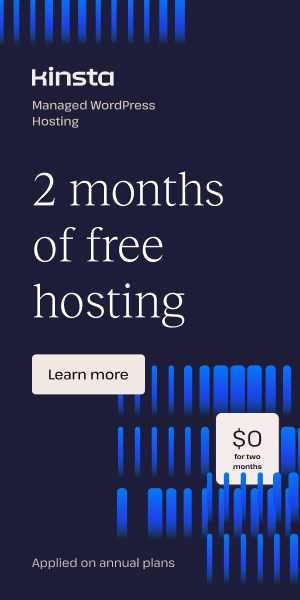The Impact of Figma to WordPress on Conversion Rates
Enhancing Website Conversion Through Streamlined Design and Development
In the digital age, where user attention spans are fleeting, the synergy between design and functionality on websites plays a pivotal role in shaping conversion rates. The process of transforming Figma designs into fully functional WordPress websites — commonly referred to as Figma to WordPress — is not just a technical exercise but a strategic move that directly impacts WordPress conversion rates. This blog post explores how this transformation enhances Figma to WordPress UX and ultimately drives higher website conversions and SEO conversions.
The Crucial Role of User Experience in Conversion Optimization
User experience (UX) is the cornerstone of any successful website that aims to convert visitors into customers. Research consistently shows that a well-designed UI can triple conversion rates, while a good UX can double them. The difference lies in how visitors perceive and interact with your site within seconds of landing on it.
Figma, a leading collaborative interface design tool, empowers designers to create visually stunning and strategically mapped-out website layouts. When these designs are expertly converted to WordPress through services like Figma2WP Service, the resulting website not only looks great but is also optimized for speed, responsiveness, and seamless interaction — all vital elements that reduce bounce rates and improve conversions.
How Figma to WordPress Influences Conversion Rates
- Pixel-Perfect Implementation: Converting from Figma to WordPress allows developers to replicate the exact design envisioned by UX/UI experts. This precision ensures brand consistency and enhances trust, which is critical for user engagement.
- Improved Website Speed: Clean, optimized code generated during the conversion process results in faster-loading pages. As website speed is a major factor influencing conversions, this benefit cannot be overstated.
- Responsive Design: Figma designs are crafted with responsiveness in mind. When translated correctly to WordPress, the website automatically adapts to all devices, including smartphones and tablets, leading to higher mobile conversion rates.
According to Conversion Rate Optimization experts, a mobile-optimized landing page can improve conversion rates by up to 27%, underscoring the importance of responsive design in today’s mobile-first world.
SEO and Conversion Synergy in WordPress Websites
Conversion isn’t just about everything looking good or functioning smoothly–it’s also closely tied to SEO conversions, as organic traffic often converts better when the website meets user expectations.
- Semantic HTML and Clean Code: Properly coded WordPress sites, as achieved through professional Figma to WordPress conversions, ensure search engines can easily crawl and index the website.
- Optimized Page Structures: With Figma designs structured around user flows, turning these into WordPress pages helps maintain logical content hierarchies — a factor that boosts SEO.
- Integration of SEO Best Practices: Conversion-focused WordPress themes and plugins optimized during the build phase improve loading speed, metadata management, and schema markup, all essential for SEO success.
Combining excellent UX and SEO creates a virtuous circle where increased visibility leads to more qualified traffic that experiences frictionless interactions, resulting in greater conversions.
Real-World Examples Demonstrating Impact
Companies leveraging high-quality Figma to WordPress conversions have reported significant improvements in their conversion metrics:
- Tech Startups: A startup revamped its product landing page with a Figma-based redesign and utilized a custom WordPress build to implement the design. Post-launch, the site’s lead capture rate increased by 35% due to improved navigation and call-to-action prominence.
- E-commerce Stores: An online retailer migrated to a WordPress site developed from Figma designs that focused on streamlined checkout flows and mobile responsiveness. Their cart abandonment rate dropped by 20%, directly boosting sales.
- Service Providers: An agency used a service like Figma2WP’s expert conversion to build a blog optimized for SEO and UX. Organic traffic rose by 50%, and conversion rates doubled within six months.
Best Practices for Maximizing Conversions Post Figma to WordPress Conversion
- Run A/B Testing: Use tools like Optimizely or VWO to test different versions of pages to identify what resonates best with visitors.
- Leverage Analytics: Platforms such as Google Analytics and Hotjar provide insights into user behavior, helping tweak site elements based on real data.
- Optimize Calls to Action: Clear, action-oriented CTAs placed strategically where users spend the most time can lift conversion rates significantly.
- Maintain Content Freshness: Regularly update your blog or resource sections to boost SEO rankings and engage returning visitors.
Conclusion
The impact of converting Figma designs into WordPress websites goes beyond aesthetic fidelity. It significantly enhances user experience, optimizes site performance, and strengthens SEO foundations — all converging to improve WordPress conversion rates. For businesses in the USA, UK, and Canada looking to enhance their website conversions, investing in professional Figma2WP Service can be a game-changer.
If you are ready to take your website’s user experience and conversion rates to the next level, don’t hesitate to Contact Us for expert assistance in turning your designs into high-performing WordPress sites.
More From Our Blog
Enhancing Your Website with Dynamic Job Board Functionality In today’s competitive employment market, having a dedicated job board integrated directly into your website is a game-changer for businesses, recruiters, and career-focused platforms. For companies looking to provide seamless job listings and application processes, employing a reliable job board WP plugin is essential. Additionally, combining an Read more…
Maximizing Classified Ads Impact Through Modern Conversion Strategies In today’s digital marketplace, turning casual visitors into active users or buyers on classified ads sites requires more than just posting listings. Effective conversion rate optimization (CRO) is the secret weapon that many marketplace sites leverage to boost engagement and sales. Whether you are running a job Read more…


